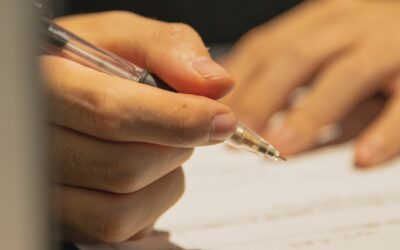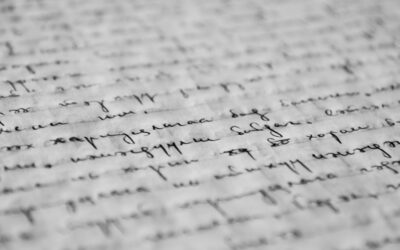By Jens Larsen and Cæcilie Liv Carlsen
You may already be using artifacts such as blocks, shapes, stones and more as an approach to help the client separate the positive and negative life events. In this method, which we call Artifact Storytelling, the artifacts are the primary tool along with your dialog and creative work with the client. Again, it’s a co-creation process, but with the customer at the center.
It is important to emphasize that the method should be seen as a supplement to the knowledge and experience you already have in your work as a therapist. The method can be used both individually and in groups with the therapist as facilitator. In this article, we briefly explain the method and walk you through a process with the different phases that you can use as a starting point.
Each artifact contains a narrative and a range of meanings that the client is offered and can draw on.
Concentration and imagination
The argument for using artifacts in storytelling and trauma therapy is that the physical objects help maintain concentration for the client. As opposed to the narrative being made up of words that can be difficult to retain if the customer is struggling to concentrate due to racing thoughts. Additionally, the artifacts in art therapy help to reinforce externalization and create another space of possibility for the client and therapist to explore together.
The artifacts also enhance what we call in art therapy the creative space and imagination. Each artifact contains a narrative and a range of meanings that the client is offered and can draw on. Finally, artifacts invite a more embodied cognition through the material they are made of.
Methods and theories
The method has been used among American war veterans with post-traumatic stress, who have used artifacts to explore more positive narratives and new perspectives based on the artifacts. The method is similar to what is known in therapy as systemic constellations or family constellations, in “sandbox play” and at Aalborg University, researcher and PhD. Anete Camilla Strand developed and researched the Material Storytelling method. Finally, our method is inspired by the 7 principles of the True Storytelling method (Larsen, Boje, Bruun), which form the different phases of the process.

Processes
In the following, we will go through the process of using artifacts in storytelling.
Preparation, artifacts and situational awareness
In preparation for the session with the client, you should have collected a number of artifacts, e.g. toy figures, things from nature, stones, a branch, tools, etc. Depending on the situation, you can place the artifacts on a table so that the client has an overview of them or leave them on the table. There may also be considerations around when to introduce the method to the client. It’s about creating a safe and trusting space.
Phase 1: Setting expectations and the trusting space – approx. 10 minutes
Set expectations with the client about what you are going to explore, e.g. “How do I get more energy in my life?”, “How do I get more self-esteem and self-confidence?”, “How can I get better at letting go of what’s weighing me down?” The purpose of setting expectations is both to focus on the topic you want to explore and to create the safe and trusting space we mentioned above.
Phase 2: Artifact selection – approx. 5 minutes
After setting expectations, the client should choose some artifacts from the table. For example, the therapist can say: “There are some artifacts here on the table and you are now going to choose 6-7 artifacts. But try to let the artifacts choose you instead of rationally trying to choose the ones you think are the right ones. Understand that they should symbolize something in your story. Choose them intuitively based on which ones speak to you. You can take your time.” The therapist then withdraws and gives the client time to dwell on the artifacts.
Phase 3: Positioning and gentle approach – approx. 10 minutes
Then ask the client to place the artifacts on the table in the way the client thinks they should be placed. It’s important to emphasize that there is no one right way to do this. Then ask probing questions about the artifacts:
- What associations does each artefact create?
- Is there a connection between the artifacts?
- Do they point in certain directions?
- Is there anything else that comes to mind when you see the artifacts?
Phase 4: Restory process – approx. 20-25 minutes
The next process is what we call the restory process, where we work with the artifacts to create one or more new narratives by changing the placement of the artifacts on the table, which opens up resources and opportunities.
Questions about the restory process:
- How should the artifacts be placed if they were to describe the story now?
- How can you rearrange the artifacts to create a resource narrative with what you want more of?
- Do the artifacts have properties that can be used in the new resource of storytelling?
- Is there a need to supplement with other artifacts? (client can revisit the other artifacts)
- What does the timing of the new narrative mean?
- What do we do if you encounter resistance in the new narrative? Should the artifacts be rearranged or supplemented with more?
- How can we stage and communicate the new narrative for others to see?
Phase: 5 Flying out and reflections and ideas to test – approx. 15 minutes
If you have been in the creative space with the client, creating a narrative, the purpose of the final phase is to create an overview and explore what is valuable for the client to take away.
Questions for inspiration
- What key themes and values can you take away from the session?
- What can the set design inspire you to test for the next time we meet?
Documentation
Finally, ask the client to take a photograph of the set design so they can revisit it. In addition, the same scenario can be continued in other sessions and the client can experience how the life story and the scenario continuously change.



